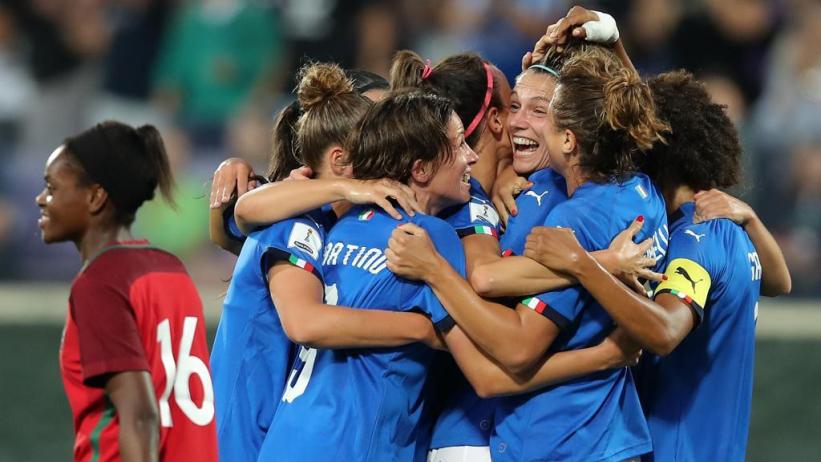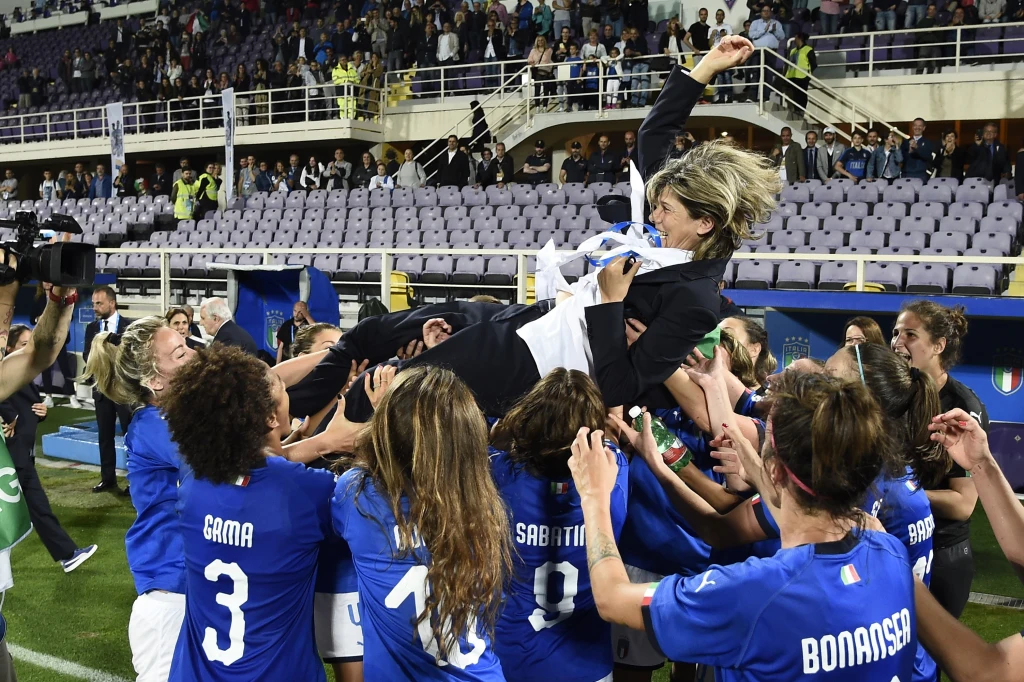It’s safe to say that the World Cup in Russia this summer has been quite enjoyable to watch. Last minute winners, stunning goals and fancied teams crashing out early has entertained fans. However, Italians have watched on with anguish, smarting at not reaching the World Cup for the first time since 1958. Despite the pain that lingers in the men’s national team, the women’s team is enjoying a renaissance, which could have significant ramifications for the game in Italy.
It was on the 8th June this year when history was made, as the Azzurre’s 3-0 win against Portugal in Florence clinched qualification for the 2019 World Cup, their first appearance in 20 years. Their qualifying campaign with one game to go has been impressive, winning all of their seven matches, scoring 17 goals and conceding just twice.
Reaching the World Cup, to be held in France next year, is the culmination of a long journey for Italy’s women. Since their last World Cup appearance in 1999, they’ve suffered heartache during the qualifying stages, especially losing to the USA in a two legged confederation playoff and missing out on reaching the 2011 World Cup.
However, the seeds of progression in this side began to take hold five years ago under manager Antonio Cabrini when they qualified for Euro 2005 in England, reaching the quarter-finals. Qualifying for Euro 2013 in Sweden, despite exiting in the group stages, gave them further exposure back home, where the fixation has always been focused on the men’s game. Importantly, that exposure was turned into action in the space of a few years.
In early 2015, the Italian Football Federation (FIGC) decreed that Serie A women’s clubs were to be made professional. It meant independent clubs unable to turn professional were forced to sell their licences, but it also brought in other professional clubs to the fold. Fiorentina entered the league in July 2015, Juventus created it’s women’s team to enter Serie A in 2017 and Roma last month announced their women’s team will participate in the 2018-19 season. AC Milan will also be there next season, but only as a result of the club’s controversial acquisition of Brescia’s licence – a team that won Serie A in 2014 and 2016. Those who benefit from the domestic growth of the game sadly will also have its victims.
On the other hand, the FIGC and league is at least trying to make the domestic game a success. Like in the men’s Serie A in the 1990s, the female version has cleverly managed to entice well known foreign talent, with veteran England international Eni Aluko to play for current league champions Juventus. Unfortunately, these positive steps in the domestic and national game has been tinged with negativity, as some amongst Italy’s footballing elite still display a mentality from the Stone Age. Felice Belloli, then head of Italy’s amateur football association (LND), allegedly said in a LND meeting back in May 2015: “That’s enough, we can’t always talk about giving money to this bunch of lesbians,”
Belloli repeatedly denied saying this, despite his words being noted in the official minutes of the meeting, and he was soon sacked as head of the LND. Despite Belloli’s removal, this episode shows why Italy reaching the World Cup is crucial in silencing the naysayers. In addition, this is a golden opportunity to take advantage of a gap in the market, with the Azzurre succeeding where their star-studded male compatriots failed.

The Azzurre celebrate during their 3-0 victory over Portugal in Florence
The 24-team World Cup in France next year may be Italy’s first appearance in over 20 years, but the competition format might help their chances of progressing into the knockout stages. The six group winners, as well as six runners up, advance into the last 16, along with the four best third placed teams from the six groups. The make up of these groups won’t be known until the draw is made on 8 December, 2018. Alongside Italy, 10 teams (including hosts France) have already qualified: Australia, Brazil, China, Chile, Japan, South Korea, Thailand and the USA.
Italy, under the stewardship of Milena Bertolini since August 2017, do have a competitive squad that could do well at the World Cup. Their strength lies in their attack, which was demonstrated by striker Cristiana Girelli during the World Cup qualifiers, the 28 year old scoring six goals in seven games to clinch their spot in France.
Girelli is well supported by veteran Daniela Sabatino who helped clinch World Cup qualification when scoring the opener in Italy’s 3-0 win against Portugal. Supported by versatile midfielder Barbara Bonansea, Sabatino has had a great season for Juventus: scoring 19 goals in their league triumph while Girelli scored 17. Also in the national team is Valentina Giacinti – capocannoniere for Brescia scoring 21 goals in 23 games.
If the Azzurre could have a successful World Cup in France, for instance going deep into the knockout rounds, this could have a substantial impact on women’s football in Italy. Take England for example, who finished third in the 2015 World Cup, the best performance by the national team since their male counterparts won the 1966 World Cup. The Lionesses’ exploits in Canada helped increase female participation in the sport, boosted television ratings and brought an overall feel good story to women’s football in England.
While Italy might not reach the semi-finals, a good tournament showing can be the stepping stone to more recognition in Italy, as well as sustained investment. For example, Italy’s World Cup qualifying campaign wasn’t shown on Rai, Italy’s state broadcaster, not even the Azzurre’s 3-0 win vs Portugal that clinched their World Cup spot. Exposure to an audience will help grow the game in Italy and that starts with a good World Cup performance.
Whether or not that happens, at least Italy will be playing at a World Cup.

